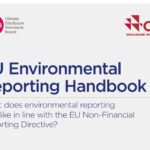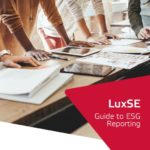In a new study to be released next month, the Oakland-based Rose Foundation for Communities and the Environment spotlights a pervasive corporate practice–the underdisclosure of environmental liabilities. In the post-Enron landscape, the investment community has grown increasingly aware that underdisclosure can negatively affect stock value. Last month the Social Investment Forum (SIF) sent a letter to Securities and Exchange Commission (SEC) Chairman Harvey Pitt asking for companies to be held accountable for not fully revealing their environmental liabilities. The Rose report offers readily available industry guidelines that the SEC could adopt to increase environmental disclosure.
"Environmental factors do create real liabilities, and they do make a real incursion on value–certainly on the negative side. Disasters really do cost you money," said Calvert Group Director of Social Research Julie Gorte. "There are legitimate reasons why investors should be concerned about environmental disclosure. This may sound funny, but thank God Enron at least brought this whole matter of disclosure to the public’s attention."
The primary fault with current disclosure practices, said Dr. Gorte, is that companies do not aggregate their environmental liabilities. This analysis concurs with the findings of the Rose report.
"Companies have enough latitude to keep an awful lot of environmental liabilities off their 10-K," explained Dr. Gorte. "For example, they’ll look at SuperFund liabilities one by one rather than in the aggregate, and decide that, since no single SuperFund site comes up to the minimal level of reporting, even if the entire liability is ten times greater than the minimum level, that they don’t have to report any of that."
(A 10-K is a form all publicly traded companies must file with the SEC on an annual basis. The 10-K contains a comprehensive review of the company for the past year and includes detailed financial data that is often not included in the company’s annual report.)
The Rose report, entitled "The Environmental Fiduciary: The Case for Incorporating Environmental Factors into Investment Management Policies," cites an Environmental Protection Agency (EPA) study that concluded that the majority of companies were not complying with SEC rules on disclosure. The 1998 EPA study revealed that 74 percent of companies failed to meet SEC disclosure requirements regarding environmental liabilities that exceed $100,000.
"You can give people a little leeway for error, but when three-quarters of the companies that have fines and sanctions over $100,000 are not disclosing them, then the problem is systemic," said Rose Foundation Executive Director Tim Little.
In October 2001, the EPA’s Office of Regulatory Enforcement released an Enforcement Alert summarizing SEC disclosure requirements. However, this alert may be viewed as having little backing: only once in the past 25 years has the SEC taken action to enforce the disclosure of environmental liabilities. Although the SEC has clear authority, it lacks the resources necessary to enforce its regulations effectively.
"Nobody’s funding the police, and they’re driving cop cars from the 1950s," said Susannah Blake Goodman, author of the Rose report, metaphorically characterizing the SEC’s regulatory dilemma.
The Bush Administration recently budgeted the SEC for "zero growth" in staffing, despite Chairman Pitt’s testimony before the Senate that the commission is under siege with regulatory action in the wake of Enron. President Bush has also announced a ten-point plan to enhance corporate responsibility that included being "mindful of the environment."
The Social Investment Forum cited this phrase in appealing to Chairman Pitt to convene a roundtable discussion on environmental and social disclosure. Recently, the SEC has hosted numerous roundtables on topics inspired by Enron, such as financial disclosure and auditor oversight. The SIF letter specifically asks the SEC to consider environmental liabilities in aggregate, as the Rose report suggests.
The Rose report concludes with a set of suggested action steps. Most importantly, the foundation recommends that the SEC adopt disclosure guidelines similar to those developed by the American Society for Testing and Materials (ASTM). ASTM guidelines require that companies to aggregate environmental liabilities.
"These guidelines don’t come from some bureaucrat at the EPA, they’re not some government prosecutor’s dream–these come from industry," said Mr. Little. "The standards are just voluntary right now, but if the SEC could meet tomorrow and say, ‘Let’s adopt these into regulation,’ then we’d get much clearer environmental disclosure."



